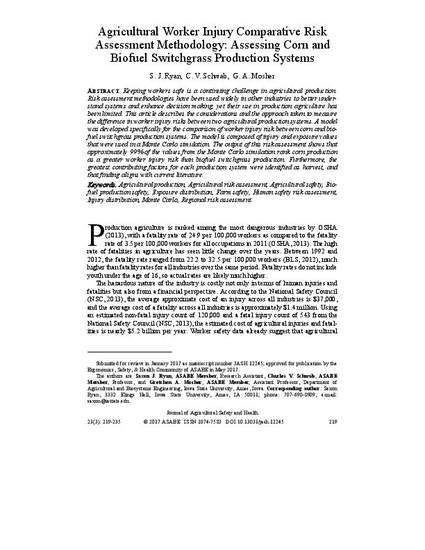
Keeping workers safe is a continuing challenge in agricultural production. Risk assessment methodologies have been used widely in other industries to better understand systems and enhance decision making, yet their use in production agriculture has been limited. This article describes the considerations and the approach taken to measure the difference in worker injury risks between two agricultural production systems. A model was developed specifically for the comparison of worker injury risk between corn and biofuel switchgrass production systems. The model is composed of injury and exposure values that were used in a Monte Carlo simulation. The output of this risk assessment shows that approximately 99% of the values from the Monte Carlo simulation rank corn production as a greater worker injury risk than biofuel switchgrass production. Furthermore, the greatest contributing factors for each production system were identified as harvest, and that finding aligns with current literature.
Available at: http://works.bepress.com/charles_schwab/121/

This article is published as Schwab, C.V., G.A. Mosher and S.J. Ryan. 2017. Agricultural Worker Injury Comparative Risk Assessment Methodology: Assessing Corn and Biofuel Switchgrass Production Systems. Journal of Agricultural Safety and Health. 23, no. 3: 219–235, doi:10.13031/jash.12245.